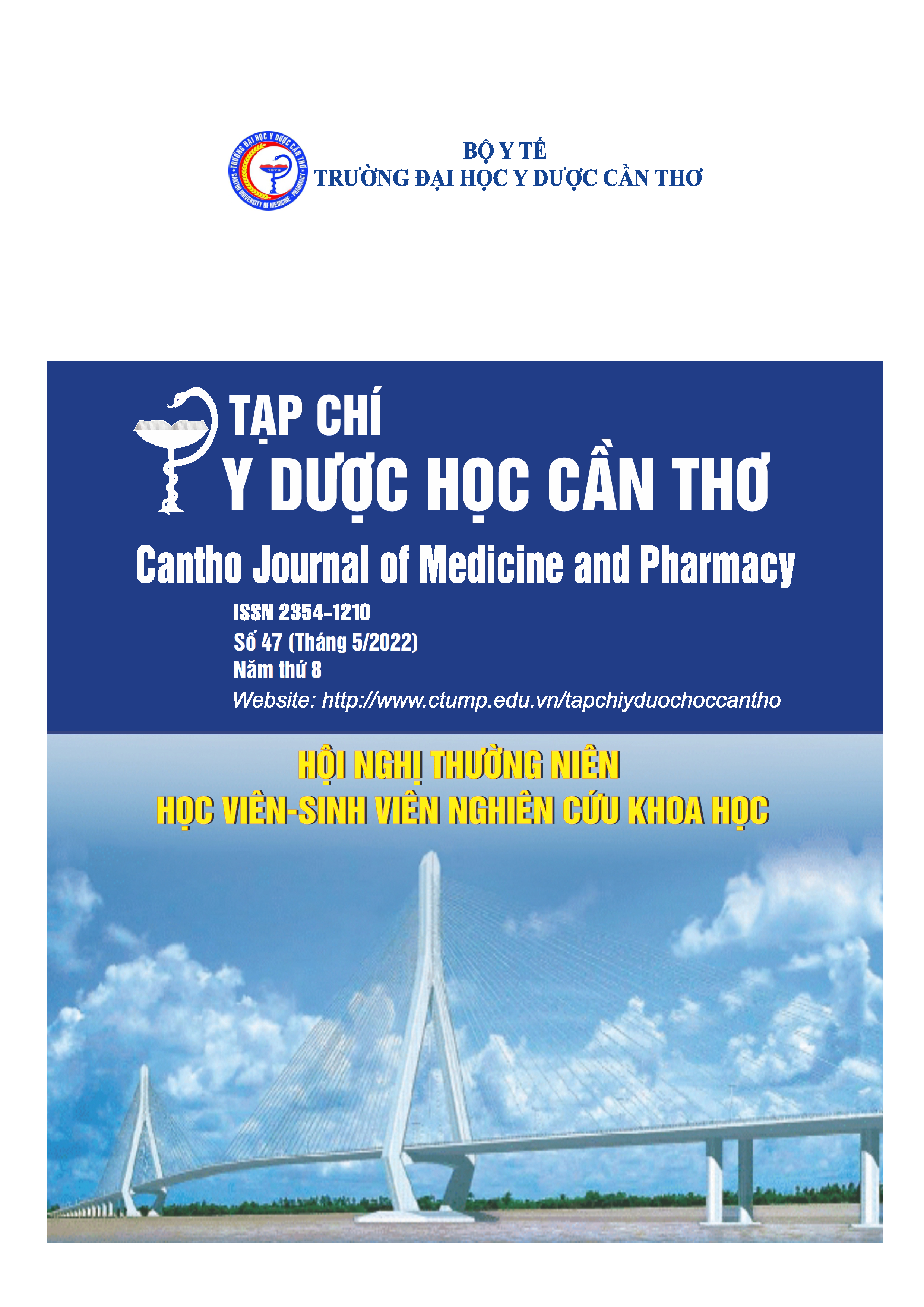Clinical, sub clinical features of early neurological deterioration during the acute phase with large vessel occlusion and minor neurological deficits
Main Article Content
Abstract
Background: Patients with mild stroke (NIHSS ≤6) and large vessel occlusion (LVO) generally do not receive revascularization therapy according to stroke guidelines. Several studies have shown that in patients with mild ischemic stroke and LVO, approximately 5% to 40% have early neurological deterioration (END). END was independent predictor of unfavourable outcomes and mortality [1]. Therefore, clinical monitoring of these patients in the acute phase is necessary to have timely interventions when the patient has signs of END. Objective: To describe the clinical and subclinical features of acute ischemic stroke patients with LVO and END. Materials and methods: A cross-sectional descriptive study was conducted on 60 patients at Can Tho Stroke International Services with LVO and END. Results: From March 2021 to December 2021, there were 60 eligible patients. The rate of anterior circulatory stroke was 86.7%. Middle cerebral artery was accounting for 53.3% of culprit lesion. Admission – END interval was 35.1±26.8 hours. END associated with poor neurological deficits (increases NIHSS 6.4 points), functional independence (increases mRS 1.5 points). Conclusion: The clinical and subclinical characteristics of stroke patients with END are similar to the general characteristics of stroke patients.
Article Details
Keywords
Early neurological deterioration, acute ischemic stroke, large vessel occlusion
References
2. C. Manno, G. Disanto, et al. (2019), Outcome of endovascular therapy in stroke with large vessel occlusion and mild symptoms, Neurology, 93 (17), e1618-e1626.
3. World Health Organization (2020), The 10 leading causes of death by broad income group, World Health Organization.
4. William J. Powers, Alejandro A. Rabinstein, et al. (2019), Guidelines for the Early Management of Patients With Acute Ischemic Stroke: 2019 Update to the 2018 Guidelines for the Early Management of Acute Ischemic Stroke: A Guideline for Healthcare Professionals From the American Heart Association/American Stroke Association, Stroke, 50 (12), e344-e418.
5. Yasir Saleem, Raul G. Nogueira, et al. (2020), Acute Neurological Deterioration in Large Vessel Occlusions and Mild Symptoms Managed Medically, Stroke, 51 (5), 1428-1434.
6. Connie W. Tsao, Aaron W. Aday, et al. (2022), Heart Disease and Stroke Statistics—2022 Update: A Report From the American Heart Association, Circulation, 145 (8), e153-e639.
7. Wansi Zhong, Ying Zhou, et al. (2021), Minor Non-Disabling Stroke Patients with Large Vessel Severe Stenosis or Occlusion Might Benefit from Thrombolysis, Brain Sciences, 11 (7), 945.


